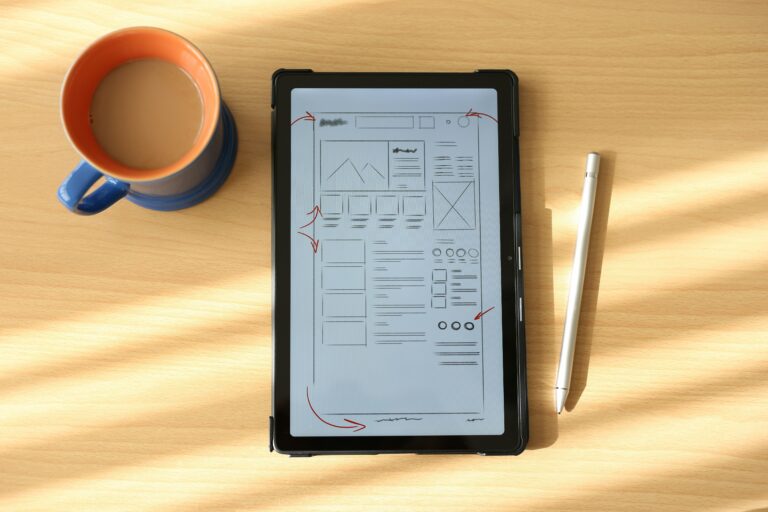As a seasoned product management leader, you understand the importance of having a solid product roadmap. A product roadmap is a strategic tool that outlines the vision, direction, and priorities for a product or service. It helps to align teams, stakeholders, and resources towards achieving business objectives. In this blog, we will discuss the steps to create a product roadmap, key considerations, and questions to think about within each step, and the impact of having a good roadmap on the business.
Step 1: Define the product vision and strategy
The first step in creating a product roadmap is to define the product vision and strategy. This step involves defining the long-term vision for the product or service, understanding the target audience, and identifying the key value proposition. You should also define the market opportunity, competitive landscape, and business goals. The product vision and strategy should be aligned with the overall company vision and strategy.
According to Marty Cagan, Founder of the Silicon Valley Product Group, “the product vision describes the future you are trying to create with your product, and the strategy describes how you will get there”. This means that the product vision should inspire the team and stakeholders and provide a clear direction for the product.
One model that can be useful for defining the product vision and strategy is the “Vision, Value, Validation” framework developed by Roman Pichler, a product management expert. This framework consists of three stages:
- Vision: Define the long-term vision for the product or service.
- Value: Identify the key value proposition, target audience, and market opportunity.
- Validation: Validate the assumptions and hypotheses through user research, experimentation, and feedback.
For example, let’s consider a case study of a software company that wants to develop a new project management tool for small businesses. The product vision could be to create a user-friendly project management tool that helps small businesses increase productivity and collaboration. The strategy could be to focus on simplicity, ease of use, and integration with popular tools like Slack and Trello. The value proposition could be to provide an affordable and customisable solution that meets the unique needs of small businesses.
Step 2: Prioritise and define the roadmap themes
The second step in creating a product roadmap is to prioritise and define the roadmap themes. This step involves identifying the key themes or areas of focus for the product roadmap. Themes are high-level categories that group related features and initiatives. Themes should be aligned with the product vision and strategy.
One model that can be useful for prioritizing and defining the roadmap themes is the “Impact/Effort Matrix” developed by Gabriel Steinhardt, a product management consultant. This matrix consists of four quadrants:
- Quick Wins: High impact, low effort initiatives that can be executed quickly.
- Major Projects: High impact, high effort initiatives that require significant resources and time.
- Fill-Ins: Low impact, low effort initiatives that can be added as a secondary priority.
- Time Wasters: Low impact, high effort initiatives that should be avoided or postponed.
To prioritise the themes, you should consider the business goals, customer needs, market trends, and technical feasibility. You should also involve stakeholders and team members in the prioritisation process.
For example, let’s consider the case study of the software company that wants to develop a new project management tool for small businesses. The themes could be:
- Task Management: Enable users to create, assign, and track tasks.
- Team Collaboration: Provide features that enhance team communication and collaboration.
- Reporting and Analytics: Provide insights and metrics on project progress and performance.
- Integrations: Integrate with popular tools like Slack, Trello, and Google Drive
Step 3: Define the roadmap initiatives
The third step in creating a product roadmap is to define the roadmap initiatives. This step involves breaking down each theme into specific initiatives or projects. Initiatives should be clearly defined, measurable, and achievable within a specific timeframe. They should also be aligned with the product vision and strategy and contribute to the overall business goals.
One model that can be useful for defining the roadmap initiatives is the “Goals, Signals, Metrics” framework developed by Teresa Torres, a product discovery coach. This framework consists of three stages:
- Goals: Define the business goals and customer needs that the initiative is addressing.
- Signals: Identify the key signals or indicators that will measure the success of the initiative.
- Metrics: Define the specific metrics that will be used to track progress and success.
To define the initiatives, you should consider the dependencies, risks, and resources required. You should also involve stakeholders and team members in the planning process. For example, let’s consider the case study of the software company that wants to develop a new project management tool for small businesses.
An initiative under the theme of Task Management could be:
- Task Board: Create a visual task board that enables users to create, assign, and track tasks.
- Goals: Increase user productivity and organization.
- Signals: Users are able to complete tasks on time and meet deadlines.
- Metrics: Task completion rate, time to completion, user satisfaction.
Step 4: Create the roadmap timeline
The fourth step in creating a product roadmap is to create the roadmap timeline. This step involves organising the initiatives into a timeline that shows the order and duration of each initiative. The timeline should be realistic, achievable, and flexible to accommodate changes and adjustments.
One model that can be useful for creating the roadmap timeline is the “Three Horizon Model” developed by McKinsey & Company, a global management consulting firm. This model consists of three horizons:
- Horizon 1: Short-term initiatives that focus on improving the current product or service.
- Horizon 2: Medium-term initiatives that focus on extending the current product or service or exploring new opportunities.
- Horizon 3: Long-term initiatives that focus on creating new products or services or entering new markets.
To create the roadmap timeline, you should consider the dependencies, risks, and resources required. You should also involve stakeholders and team members in the planning process and communicate the timeline clearly to all stakeholders.
For example, let’s consider the case study of the software company that wants to develop a new project management tool for small businesses. The roadmap timeline could be:
- Q1: Task Board – Create a visual task board that enables users to create, assign, and track tasks.
- Q2: Team Collaboration – Provide features that enhance team communication and collaboration.
- Q3: Reporting and Analytics – Provide insights and metrics on project progress and performance.
- Q4: Integrations – Integrate with popular tools like Slack, Trello, and Google Drive.
Step 5: Communicate and iterate the roadmap
The fifth and final step in creating a product roadmap is to communicate and iterate the roadmap. This step involves sharing the roadmap with stakeholders, gathering feedback and insights, and making adjustments and updates as needed. It is important to keep the roadmap transparent and up-to-date to ensure alignment and collaboration across teams and stakeholders.
One model that can be useful for communicating and iterating the roadmap is the “OKRs” framework developed by John Doerr, a venture capitalist and author. OKRs stand for Objectives and Key Results and consist of two components:
Objectives: The desired outcome or goal that the initiative is trying to achieve.
Key Results: The specific metrics or indicators that will measure the success of the initiative.
To communicate and iterate the roadmap, you should involve stakeholders and team members in the planning process and provide regular updates on progress and changes. You should also use data and insights to inform decisions and adjust the roadmap as needed.
For example, let’s consider the case study of the software company that wants to develop a new project management tool for small businesses. The company could use the OKRs framework to communicate and iterate the roadmap:
Objective: Improve user productivity and organization. Key Results: Task completion rate, time to completion, user satisfaction.
Objective: Increase user engagement and retention. Key Results: Daily active users, churn rate, user feedback.
Objective: Expand market reach and revenue. Key Results: New customer acquisition, revenue growth, market share.
The impact of having a good roadmap on the business
Having a good product roadmap can have a significant impact on the success of the business. A good roadmap can:
- Increase alignment: A good roadmap helps to align teams and stakeholders towards achieving business objectives. It ensures that everyone is working towards a common goal and helps to avoid conflicting priorities and misunderstandings.
- Improve focus: A good roadmap helps to prioritise initiatives and focus resources on the most important and impactful initiatives. It helps to avoid distractions and ensures that resources are used effectively.
- Enhance communication: A good roadmap provides a clear and transparent communication tool that helps to keep stakeholders informed and engaged. It helps to build trust and confidence in the product team and the product direction.
- Drive Innovation: A good roadmap encourages experimentation and innovation by providing a framework for exploring new opportunities and testing new ideas. It helps to ensure that the product remains relevant and competitive in the market.
The financial impact of a good roadmap
A good product roadmap can also have a significant financial impact on the business. According to a study by ProductPlan, companies with a well-defined product roadmap are twice as likely to achieve their revenue goals compared to companies without a roadmap. A good roadmap can:
- Increase Revenue: A good roadmap helps to identify and prioritise initiatives that have the potential to generate revenue. It helps to ensure that resources are focused on initiatives that have the highest revenue potential and that revenue goals are achieved.
- Reduce Costs: A good roadmap helps to avoid wasteful spending on initiatives that do not contribute to the business objectives. It helps to ensure that resources are used effectively and efficiently.
- Improve ROI: A good roadmap helps to ensure that resources are invested in initiatives that have the highest return on investment. It helps to ensure that the product team is focused on initiatives that provide the most value to the business.
Conclusion
In conclusion, creating a good product roadmap is a critical task for product management leaders. It requires a strategic approach that involves defining the product vision and strategy, prioritising and defining the roadmap themes, defining the roadmap initiatives, creating the roadmap timeline, and communicating and iterating the roadmap. By following these steps and considering the latest trends in the market, product management leaders can create a roadmap that aligns teams, stakeholders, and resources towards achieving business objectives and delivers significant impact to the business.




